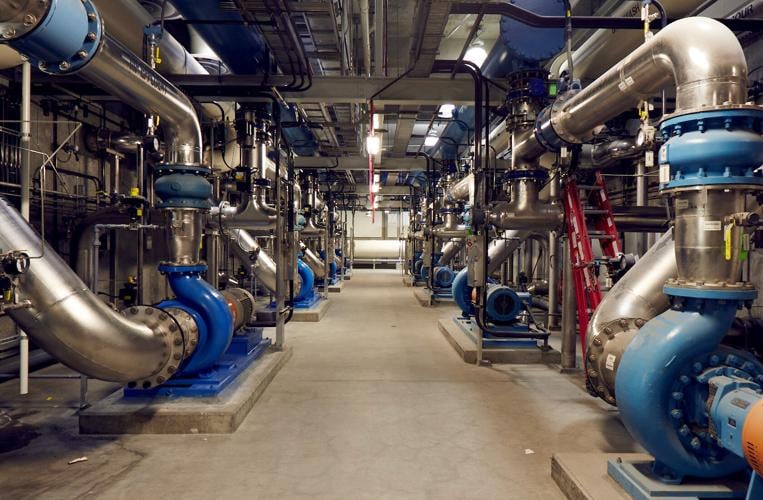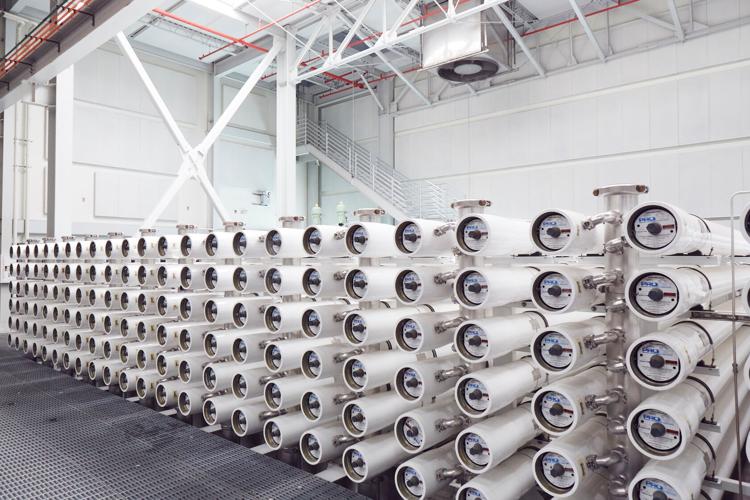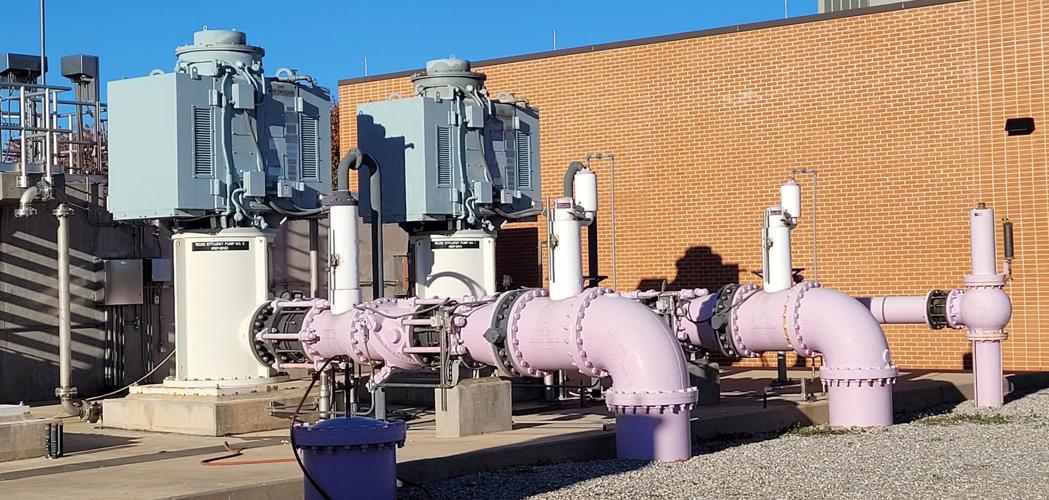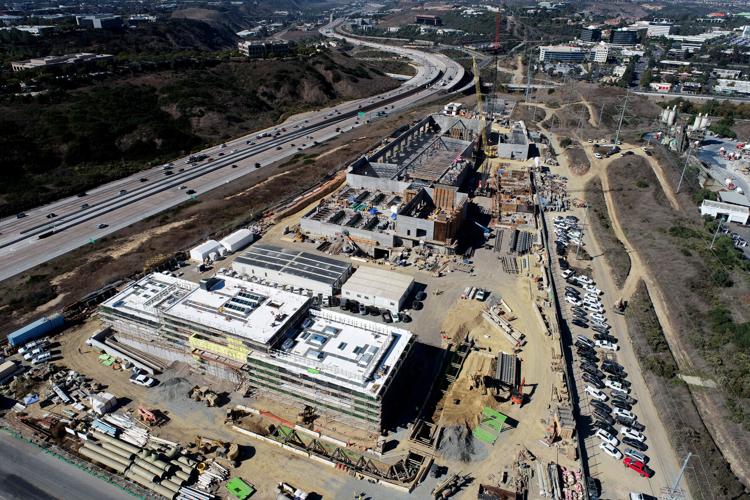Tucson will likely be diving into a new technology whenever it begins treating wastewater for drinking.
The city’s recently approved long-range water plan, called One Water 2100, calls tor recycling our wastewater by first treating it in a major, high-tech treatment plant. Then, it would be directly transferred into the city’s existing drinking water system that today serves well over 700,000 people living in the city and suburban areas.
The plan approved by the City Council in October sets a high priority for Tucson to do this to supplement its drinking water supply due to threats to its Colorado River supply from climate change. But the city has no timetable for building such a plant. Its water plan calls for testing the treatment process on a small scale before building a full-scale plant.
Called “Direct Potable Reuse,” this technology is being studied or planned for future use by a number of U.S. cities, including Phoenix and Southern California’s Metropolitan Water District.
But only a group of West Texas cities including Big Spring and Odessa, operating under one water district, and the city of Windhoek, Namibia, are currently using it on a large scale. El Paso plans to start construction of such a project very soon, and last year won a $20 million federal grant to cover a portion of the construction costs.
More Arizona cities are expected to hop on the direct reuse bandwagon once the Arizona Department of Environmental Quality approves rules at the end of 2024 for issuing permits for such systems.
Today’s more commonly used water recycling method is to treat it in a similar plant, and then recharge it into an aquifer for additional treatment or put it into a lake or reservoir for dilution and possible treatment. Or, the wastewater can be treated in an aquifer before going into a treatment plant.
Water professionals commonly call that system “Indirect Potable Reuse.”
Such treatment provides what scientists call an “environmental buffer.” It offers an advance warning if unexpected chemicals or other troublesome compounds are present in wastewater even after it leaves a treatment plant.
About 30 U.S. cities, including the Phoenix suburbs of Scottsdale and Peoria, are using this technology, says WateReuse Association, a national trade group that promotes wastewater recycling.
The Orange County Water District in California is among them, having treated wastewater and recharged it into its aquifer since 2008. San Diego is building a similar system that it expects will supply nearly half the city’s total water needs with recycled wastewater by 2035. Wichita Falls, Texas has also used the indirect method since 2018.
Tradeoffs
The consensus among experts interviewed by the Arizona Daily Star is that both technologies can work but that tradeoffs exist for both.

Orange County, California's groundwater replenishment system microfiltration area. Orange County is among areas that treat wastewater and recharge it into the aquifer; it's far more unusual to treat wastewater and send it directly to taps for drinking, as Tucson eventually plans to do.
Directly discharging treated wastewater into the drinking water system generally costs less. That’s because it avoids the additional energy costs of pumping the treated wastewater from the ground that are borne by the other system that recharges it into the aquifer for additional treatment.
The recharging approach, in return, offers an extra safety margin, by providing two rounds of treatment, some experts say.
But while the double-treatment method is safer, it raises other, potentially sticky questions that aren’t faced by treatment systems that put the treated water directly into an urban drinking water system, said Arturo Keller, a University of California at Santa Barbara professor. He co-authored a major 2021 study on the practice of putting treated water directly into the drinking water system.
Either way, many experts say treating wastewater for drinking is going to be inevitable in many major cities, including Tucson, that have arid climates and face potential future water shortages. It’s also much less expensive than desalinating seawater.
Another study found that treating wastewater for drinking consumes less than half the amount of energy needed to desalinate seawater, said Emily Tow, an assistant mechanical engineering professor at Olin College of Engineering in Needham, Massachusetts who led the study. Wastewater is cheaper to treat because it has far less salt than seawater.
What’s more, you can recycle water as many as three times if you reuse 80% of what you use originally, and don’t lose any of the reused water to evaporation, said Andrea Achilli, an associate professor in chemical and environmental engineering at the University of Arizona.
In fact, if you don’t lose any of the recycled water to evaporation and it all goes down the sewer after it’s reused, it can be recycled “infinite times,” as is done in outer space, Achili said.
Reusing wastewater and desalinating seawater are considered “the final backstop,” said David Quanrud, an assistant professor at UA’s School of Natural Resources and the Environment. “It’s not your first choice. After other alternatives have been exhausted, including for us when climate change kicks in more and we’re losing the availability of (Colorado) river water, we’re hitting that final backstop.”
Contaminants
The 2021 study led by Keller found that most if not all known contaminants can at least theoretically be removed by one form or another of treatment technology. But because of the wide array of infectious and toxic compounds that find their way into wastewater, sometimes more than one form of treatment can be required for a single compound, the study found.
Reverse osmosis, for instance, runs wastewater through membranes to remove pollutants. It’s known to be particularly effective in removing most heavy metals, salts, pathogens and dissolved solids. It’s less effective for volatile organic compounds such as TCE and PFAS, and for various compounds made of small molecules.`
But even some bacteria can grow back in treated wastewater after it passes through reverse osmosis membranes, meaning additional disinfection would be needed through other processes such as ultraviolet light treatment, ozonation and chlorination, the study said.
One such compound requiring additional treatment is NDMA, an industrial compound formerly used to make rocket fuel that more recently has been turning up in various pharmaceuticals, the journal Chemical and Engineering News has reported.
A possible human carcinogen, it was once made decades ago for use in rocket fuel, antioxidants and various lubricants, but it’s now only used for research purposes. It also can be unintentionally produced and released from various industrial sources, the Environmental Protection Agency has said.
A form of treatment known as nanofiltration can remove up to 90% of such compounds from wastewater. But sometimes compounds that go into the making of NDMA can leach into the wastewater even after treatment. Reverse osmosis removes it only partially, and the University of California-Santa Barbara study recommends ultraviolet light treatments as most effective.
Monitoring
Because putting treated wastewater directly into the drinking water system provides little, if any buffering, contaminants that can pass through various treatments in wastewater plants “can rapidly spread throughout the distribution system, exposing customers to enhanced risk,” the 2021 study said.
The lack of a buffer raises concerns regarding illegal or accidental discharges of chemicals into a wastewater sewer collection system or a stormwater pipeline or canal connecting to the wastewater system, the study said. Concerns about water security also increase, it said, when there is a short time to react to such events.
The use of “real time sensing capabilities are critical … as these capabilities can be used to inform operators and consumers, in real time, of danger to their drinking water supply,” the study said.
However, while a clear need exists for real-time sensing and monitoring capabilities, “few real-time sensing platforms are currently used” when directly delivering treated wastewater into drinking supplies, the study said.

Orange County, California's system uses treated wastewater to replenish groundwater. In the U.S., only a group of West Texas cities including Odessa are currently using the other method on a large scale, sending treated wastewater directly to taps, although El Paso plans to do so soon and Tucson plans to eventually.
The kind of online monitoring needed for such treatment “is still far off — I think we’re within five years,” Keller told the Star.
“We need to speed it up. We need to have continuous monitoring to make sure it’s safe. We can take samples and send them to a lab, (but) it’s expensive. You may not catch it. If it’s a holiday or you have an instrument breakdown, you can have a whole bunch of water going into your system, which is a problem,” Keller said.
As for impacts on human health, it’s very unlikely that with contaminated wastewater that “if you take a sip, you are going to die right away. It could be a long-term exposure that is a problem,” he said.
The issue of monitoring will be addressed in Arizona when the Arizona Department of Environmental Quality approves its final regulations in about a year for issuing permits to treat wastewater and then pipe it directly into drinking water systems, the agency told the Star.
“ADEQ is dedicated to ensuring the safety of Arizona’s water resources, and acknowledges the need for robust monitoring practices, especially when treated wastewater goes directly into drinking water systems, the agency said.
“ADEQ’s monitoring program includes continuous, online, real-time performance monitoring and routine analytical laboratory testing. Real-time monitoring sensor data will interface with a central control system to trigger alarms, automatic shutdowns, or diversion procedures in case of disturbances,” insuring compliance with federal Safe Drinking Water Act rules, ADEQ said.
ADEQ’s monitoring will involve oversight of industrial and commercial entities, monitoring at critical control points throughout the treatment process, and ongoing assessment of purified water quality, the department said.
“ADEQ emphasizes the importance of pilot testing for all AWP facilities to demonstrate the consistency and quality of purified water before delivery to customers,” it said.
Tucson favors direct use
Tucson Water officials declined to comment on the study on water reuse that was led by University of California-Santa Barbara researcher Keller. But in response to a question, Tucson Water Director John Kmiec made a strong pitch for a system that directly feeds drinking water supplies from an advanced wastewater treatment plant.
“Ensuring that Tucson has a strong water supply and clean water is the goal. Indirect Potable Reuse (IPR) in Tucson requires a well network to recover water for advanced treatment,” Kmiec told the Star in an email. “That well network and connective recovery pipeline could be an expensive endeavor in the urban environment.”
The direct reuse system allows for a direct connection to the effluent flow from a wastewater plant and can be scaled to what is desired for treatment without having to develop a large recovery well network, he said.
“In addition, recovering water from the environment comes with inherent risks,” he said.
There’s now a global push for the system that feeds treated wastewater directly into drinking water supplies because “the treatment process can be highly controlled and monitored at all times.
“Facilities can be scaled for local need and the risk of the introduction of unknown contaminants is greatly reduced or removed by the multi-barrier processes involved,” Kmiec said.
ADEQ offered similar comments to the Star.
“Using an aquifer for an (extra treatment) process where that aquifer is contaminated with per- and polyfluoroalkyl substances (PFAS), trichloroethylene (TCE), 1,4-dioxane, or other contaminants, including naturally-occurring contaminants, means that the treated water introduced into the aquifer becomes commingled with those contaminants,” the state agency said. “In these instances, it is the environmental buffer that is contributing to the contamination of the source water.”
But former Pima County Environmental Planning Manager Julia Fonseca wrote in comments on Tucson Water’s plan that she would strongly prefer a system that funnels wastewater into an aquifer and a treatment plant to insure more safety.
Fonseca, a hydrologist, said Tucson has had serious water quality concerns arise when contaminants unexpectedly found their way or came close to finding their way into the drinking water system.
The first instance came around 1993, when the city introduced Colorado River water from the Central Arizona Project into its drinking water system and the water corroded many peoples’ plumbing, sending them brown, foul-tasting water. That caused Tucson voters to approve a referendum in 1995 to ban direct delivery of CAP water into homes. The voters required recharging the water into an aquifer and then pumping it out for drinking.
Then, in 2021, rapidly increasing levels of PFAS compounds in the aquifer raised concerns that they could overwhelm the Tucson Airport Remediation Project water treatment plant. That plant was designed and built to remove TCE and 1,4-dioxane but not PFAS from groundwater. The city was forced to briefly shut down the treatment plant, and to switch from putting treated water into the drinking water system to putting it into the reclaimed system and the neighboring Santa Cruz River.
“The history of treating TARP and effluent water shows that we are not smart enough to deal with the wide variety of chemical constituents that now characterize municipal and industrial effluents,” Fonseca wrote. “The experience of Tucson Water with direct potable use of water from the CAP canal showed that treatment and delivery of even river water can be botched, and this was a much simpler task.”

A pumping station that transfers treated effluent from the treatment plant to a lake in Wichita Falls, Texas. Wichita Falls has also used this method, called Indirect Potable Reuse, since 2018.
Treatment methods of wastewater for drinking are extremely complex to design and maintain, she said. System problems can release contaminants to the delivered water unless there are sophisticated and reliable means to detect and divert water, she added.
“Real-time monitoring and detection is hard and unlikely to be able to respond to the constantly changing mix of chemical constituents supplied by customers,” said Fonseca.
“There are so many constituents. They are always changing in the market and you don’t know what they are. We do know that a lot of them don’t have standards; and don’t have known health effects either ... There’s a lag between our rate of innovation and our rate of understanding.”
Providing two layers of treatment “will give us time to learn from the mistakes and successes of others,” she said.
One way of responding to these concerns is to tighten controls by people and industries into a wastewater treatment plant, said mechanical engineering professor Tow. Using reverse osmosis and continuously monitoring what goes into and out of the treatment plant can also help a lot, she said.

North City pure water facility in San Diego. San Diego is building a system for Indirect Potable Reuse that it expects will supply nearly half the city's total water needs with recycled wastewater by 2035.
Longtime water attorney and former Arizona Department of Water Resources Director Kathleen Ferris said Fonseca’s concerns are important issues that must be considered by regulators examining systems that will treat wastewater for drinking.
“Water supplies, including Direct Potable Reuse and its viability, need to be fully considered in how and where we grow,” Ferris said.
Longtime Arizona Daily Star reporter Tony Davis talks about the viability of seawater desalination and wastewater treatment as alternatives to reliance on the Colorado River.







